Why Professional Air Conditioner Installation Matters
When it comes to air conditioner installation, opting for professional help is crucial. A properly installed air conditioner can drastically improve the comfort and energy efficiency of your home. With the right knowledge and expertise, HVAC technicians ensure that your AC unit works efficiently and lasts longer. Below, we explain why professional installation is essential and the potential risks of opting for DIY installation.
The Importance of Expert Installation
Professional air conditioner installation goes beyond just placing the unit and plugging it in. It involves a thorough assessment of your home’s cooling needs, ensuring that the unit is appropriately sized, and positioning the AC for maximum performance.
-
Precise Sizing and Load Calculation
A qualified technician performs a load calculation to determine the right size of the air conditioner for your space. An oversized or undersized unit can lead to energy inefficiency, higher bills, and reduced comfort. A professional will ensure the AC matches the square footage of your home, considering insulation, windows, and the local climate. -
Proper Installation of Ductwork and Wiring
Installation involves not just the AC unit but also ductwork, electrical connections, and refrigerant lines. A professional ensures that these components are installed correctly to avoid any air leakage, electrical malfunctions, or refrigerant leaks. This ensures your system operates at optimal efficiency and reduces maintenance needs in the future. -
Warranty Protection
Many air conditioning units come with a manufacturer’s warranty that requires professional installation. Installing the AC yourself may void this warranty, leaving you unprotected if anything goes wrong. -
Safety Concerns
Air conditioner installation involves handling refrigerants and high-voltage electrical systems. Mistakes made during installation can result in harmful leaks, electric shocks, or even fires. A trained professional knows how to handle these risks safely.
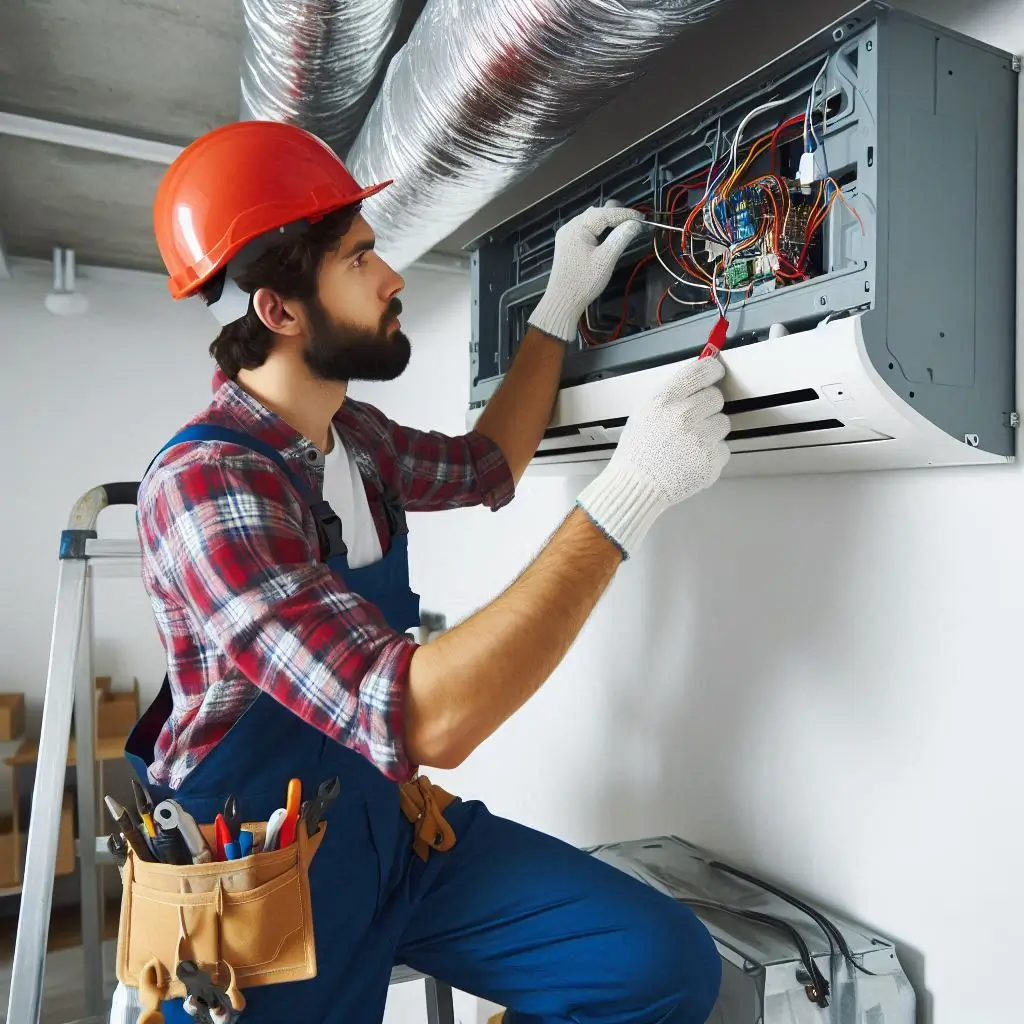
Common Mistakes to Avoid in DIY AC Installation
While DIY projects are tempting, air conditioner installation is a job that’s best left to professionals. Here are some common mistakes made by homeowners attempting to install their own AC units:
-
Incorrect Sizing
Many homeowners fail to consider the right size for their space, opting for a unit they believe is sufficient without consulting an expert. An improper-sized air conditioner will not only waste energy but also fail to cool the home efficiently. This can lead to constant breakdowns, reduced lifespan of the unit, and excessive repair costs. -
Poor Placement of the Unit
The placement of the air conditioner plays a significant role in its performance. A DIY installation may lead to incorrect placement, such as installing the unit in an area where it can’t get proper airflow or where it may struggle to cool the space effectively. Placing the unit in direct sunlight or near heat-producing appliances will decrease its efficiency. -
Unqualified Electrical Connections
Electrical wiring is complex and should be handled by a licensed professional. A DIYer may lack the knowledge of proper electrical safety procedures, potentially leading to dangerous short circuits, system malfunctions, or worse. Inadequate grounding and incorrect connections can be costly and hazardous. -
Improper Duct Sealing and Insulation
Ductwork must be correctly sealed and insulated to avoid energy loss and air leakage. DIYers may miss this essential step, leading to inefficiency, higher energy costs, and reduced air quality. A professional HVAC technician will ensure that all connections are sealed properly, allowing for smooth airflow and minimal energy waste.

How to Choose the Right Air Conditioner for Your Home
Choosing the right air conditioner (AC) for your home is a crucial decision that directly impacts your comfort, energy consumption, and long-term costs. An air conditioner that fits your home’s specific needs will ensure optimal performance, lower energy bills, and reduce the frequency of repairs. In this section, we’ll guide you through the key factors to consider and explain the different types of air conditioners available for installation.
Factors to Consider Before Installation
Before installing an air conditioner, several factors must be considered to ensure that you choose the right unit for your home. Understanding these elements will help you avoid costly mistakes and ensure your AC functions efficiently.
-
Room Size and Layout
The size of the room or area that needs cooling plays a crucial role in selecting the right air conditioner. AC units are designed for different cooling capacities, often measured in BTUs (British Thermal Units). For larger rooms or open spaces, you’ll need a more powerful unit. A professional HVAC technician can perform a load calculation to determine the required cooling capacity based on the square footage of the space. -
Energy Efficiency and SEER Rating
Energy efficiency is another important factor to consider. Look for air conditioners with a high Seasonal Energy Efficiency Ratio (SEER) rating. The higher the SEER rating, the more energy-efficient the system will be. A higher SEER rating can lead to lower electricity bills in the long run. For homeowners looking to reduce their carbon footprint, opting for an energy-efficient AC unit is a sustainable choice. -
Climate and Temperature Range
The climate in your area is also crucial when choosing an air conditioner. If you live in an area with extremely hot summers, you’ll need a more robust AC system to keep your home cool. Conversely, in milder climates, a smaller system may suffice. Understanding the temperature range and frequency of use will help determine which AC model is best suited to your home. -
Installation Location
Consider where the air conditioner will be installed. For window units, space near a window is essential. For split systems, you’ll need to think about where both the indoor and outdoor units will be placed. Proper placement is key to ensuring the unit works efficiently and effectively cools the entire room or house.

Types of Air Conditioners Available for Installation
There are several types of air conditioners to choose from, each with its own set of advantages and limitations. Selecting the right type for your home depends on factors like room size, installation space, and budget. Below, we break down the most common types of air conditioners available for installation.
-
Central Air Conditioning Systems
Central AC systems are ideal for cooling larger homes or multiple rooms at once. These systems circulate cooled air through ducts to various rooms, making them the most efficient choice for whole-house cooling. They are also the most expensive option in terms of initial installation, but they offer superior performance and energy efficiency. -
Ductless Mini-Split Systems
Ductless mini-split systems are an excellent option for homes without existing ductwork. These systems consist of an outdoor unit and one or more indoor air handlers. They are ideal for small to medium-sized homes, individual rooms, or additions. They offer flexibility and energy efficiency, as you can control the temperature in each room separately. Mini-splits are quieter and more energy-efficient than window units and central systems. -
Window Air Conditioners
Window units are a popular, affordable choice for cooling single rooms or small spaces. They are installed directly into a window and are suitable for apartments or homes without central air systems. While they are budget-friendly and easy to install, they are less efficient than central or ductless systems and can block your window view. -
Portable Air Conditioners
Portable air conditioners are another option for cooling smaller spaces. These units are mobile, allowing you to move them from room to room as needed. While portable ACs are easy to install and provide flexibility, they are generally less efficient and louder than other types of air conditioners. -
Hybrid Air Conditioners
Hybrid or dual-fuel systems combine both an air conditioner and a heat pump, allowing homeowners to use the system year-round. These systems are more energy-efficient and can save you money on heating costs during colder months. However, they may require higher upfront costs.
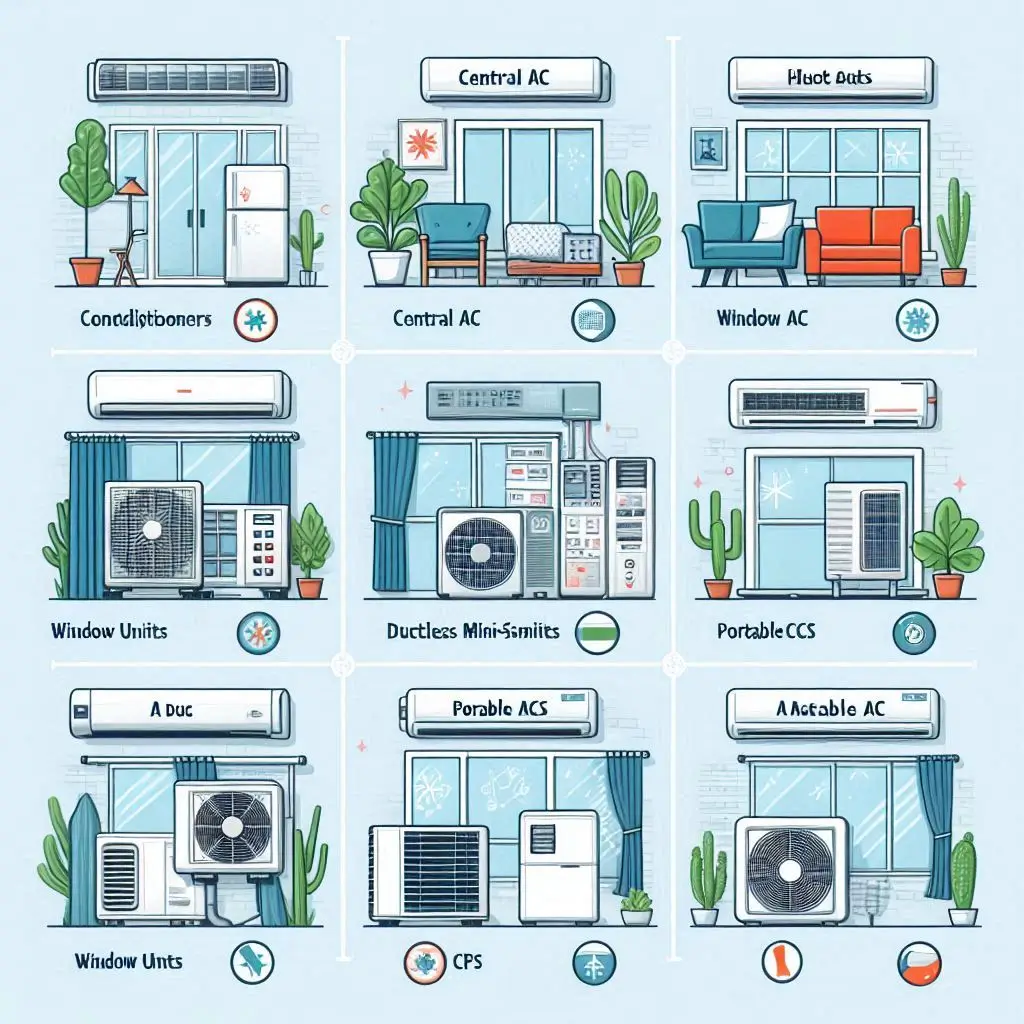
- Geothermal Air Conditioners
Geothermal systems use the earth’s stable temperature to heat or cool your home. These systems are highly energy-efficient and eco-friendly. However, they come with a higher installation cost due to the need for digging and installation of underground loops. Geothermal systems are ideal for homeowners interested in long-term energy savings and environmental sustainability.

Step-by-Step Process of Air Conditioner Installation
Installing an air conditioner is not a simple task. It involves careful preparation, precise installation, and post-installation testing to ensure optimal performance and efficiency. By following a systematic process, HVAC professionals guarantee that your air conditioner will work effectively, providing comfort for years to come. Below is a detailed breakdown of each step in the air conditioner installation process.
Pre-Installation Preparation and Site Evaluation
Before installation begins, several essential preparatory steps are taken to ensure that the installation goes smoothly. This phase is crucial to prevent any issues that may arise later.
-
Site Evaluation
A professional HVAC technician will first evaluate your home or space where the air conditioner will be installed. The evaluation includes measuring the room’s size, checking for proper airflow, and determining the best location for the unit. The technician will also assess the existing electrical wiring and ensure that your home can handle the power requirements of the new air conditioner. -
Choosing the Right AC Unit
Based on the evaluation, the technician will recommend the best type and size of air conditioner for your home. Factors such as room size, insulation, and climate are taken into account to determine the proper cooling capacity (measured in BTUs) and energy efficiency of the unit. This ensures that your air conditioner operates efficiently, saving energy and money in the long run. -
Preparing the Installation Area
Once the right AC unit has been chosen, the installation area needs to be prepped. This includes clearing the space around the installation site, removing any obstructions, and ensuring that the area is accessible for the technicians. If necessary, structural modifications like window preparation or ductwork adjustments will be made to accommodate the new system.
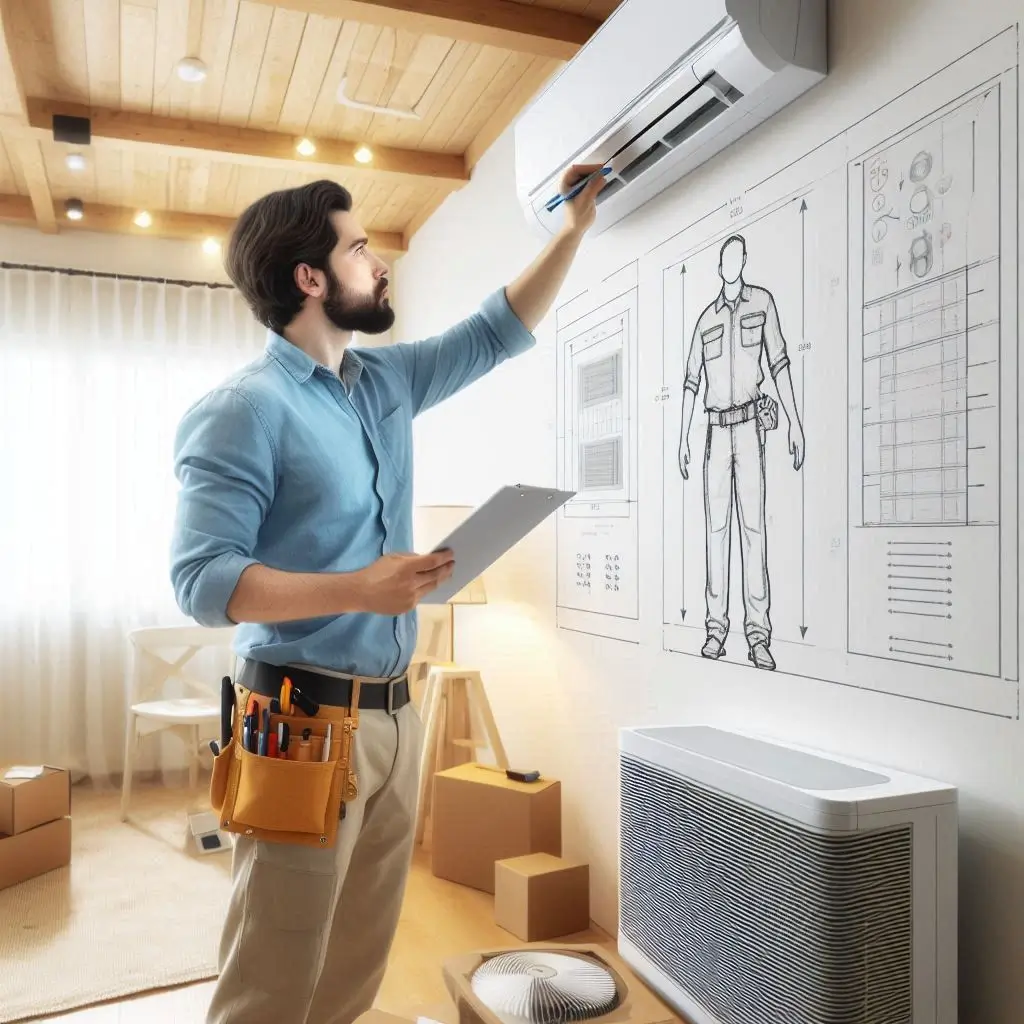
The Installation Procedure: What to Expect
The actual installation process involves several technical steps, which must be performed carefully to ensure that the air conditioner is set up correctly and safely.
-
Unit Placement and Mounting
The first step is placing and securing the indoor and outdoor units of the air conditioner. The outdoor unit is typically placed on a concrete pad or wall bracket, while the indoor unit is mounted on the wall or in a window (for window units). The technician will ensure that the units are leveled and properly positioned to allow for optimal airflow and heat exchange. -
Electrical Connections
Once the units are in place, the technician will connect the air conditioner to the electrical system. This step involves wiring the AC unit to your home’s electrical system, ensuring the proper voltage and grounding. Any electrical components, such as the disconnect switch, are installed at this stage. It’s essential that only a qualified professional handles electrical work to avoid safety hazards. -
Installing the Ductwork or Refrigerant Lines
For central AC systems or ductless mini-split systems, the technician will install the necessary ductwork or refrigerant lines. For ducted systems, this includes running ducts from the central unit to various rooms and sealing them to prevent air leaks. For ductless systems, the refrigerant lines are routed from the outdoor unit to the indoor air handler(s). -
Sealing and Insulating the System
Once the lines are connected, the technician will seal and insulate all connections to avoid energy loss and ensure efficient operation. Proper insulation prevents condensation from forming inside the ducts or refrigerant lines, ensuring the air conditioner operates without any leaks.

Post-Installation Testing and Calibration
Once the air conditioner is installed, several post-installation checks are performed to ensure that the system is working as expected. This phase involves testing the system for performance and making necessary adjustments.
-
System Start-Up and Functionality Test
After installation, the technician will power on the air conditioner and run a series of tests to ensure it is functioning correctly. This includes verifying the cooling performance, ensuring proper airflow, and checking the system for any unusual noises or vibrations. The technician will monitor the system for several minutes to confirm it is cooling the space efficiently. -
Temperature Calibration and Settings Adjustment
The technician will adjust the thermostat settings to match the desired temperature and ensure accurate readings. They will also calibrate the system to achieve the optimal performance levels based on the room size and cooling requirements. Proper calibration ensures the air conditioner operates at peak efficiency and avoids energy waste. -
Leak Test and Refrigerant Check
Another critical step is testing the system for refrigerant leaks. If the refrigerant is not properly charged, the air conditioner will not perform efficiently and could damage the system. The technician will check refrigerant levels and refill or adjust the charge as needed to ensure the system works as it should. -
Cleaning and Final Inspection
Before finishing the job, the technician will clean the installation site, removing any debris or equipment used during installation. They will conduct a final inspection to ensure everything is properly sealed, the unit is functioning as expected, and no issues are present.
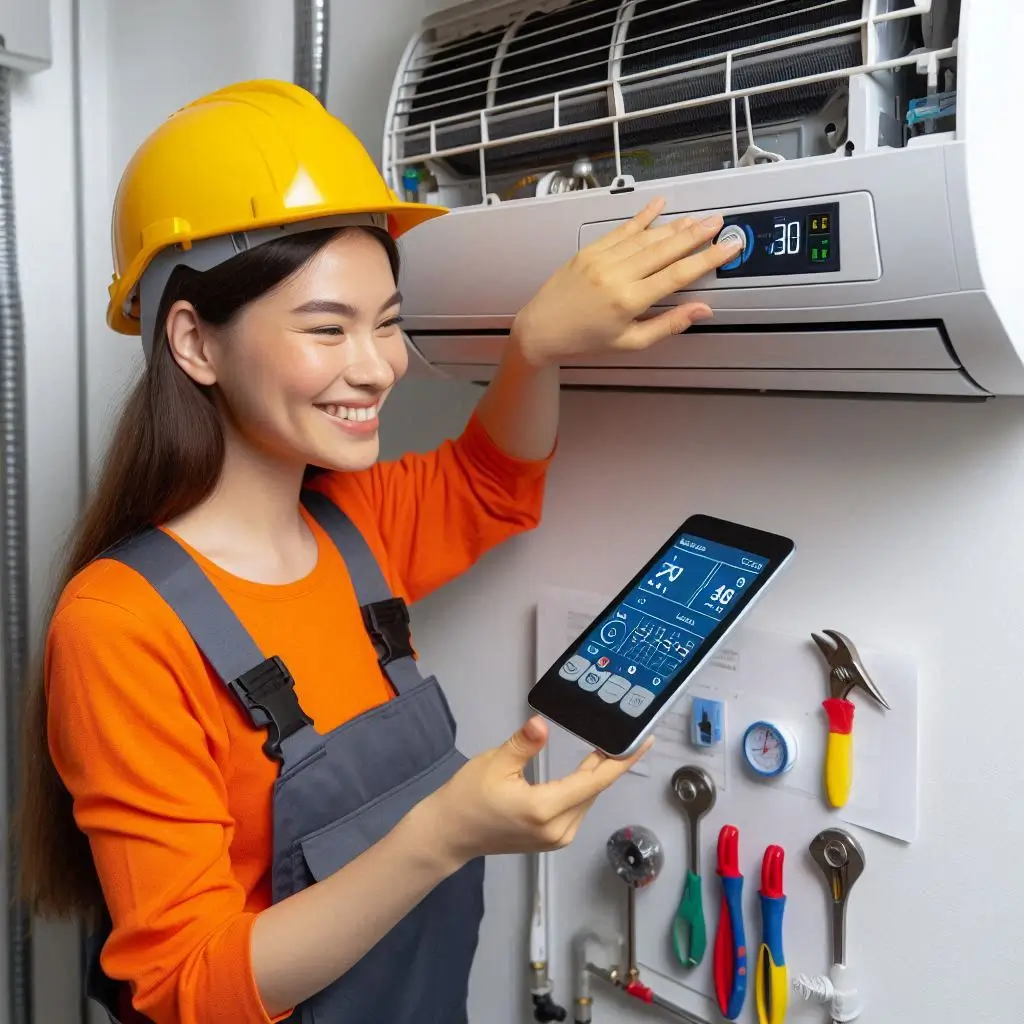
Air Conditioner Installation Cost Breakdown
When considering installing a new air conditioner, it’s essential to understand the factors that influence the overall cost. Air conditioner installation can be a significant investment, but with the right approach, you can ensure you’re getting value for your money. In this guide, we will break down the cost components of AC installation and provide tips on how to save without compromising the quality of your system.
Factors Affecting the Cost of AC Installation
The cost of air conditioner installation can vary depending on several factors. Understanding these can help you estimate the price and plan accordingly.
- Type of Air Conditioner
The type of air conditioning system you choose plays a significant role in the cost. Central air conditioners, ductless mini-split systems, and window units each have varying installation complexities and costs. Central systems, which require ducts and extensive installation, generally cost more than ductless or window units, which are more straightforward to install.
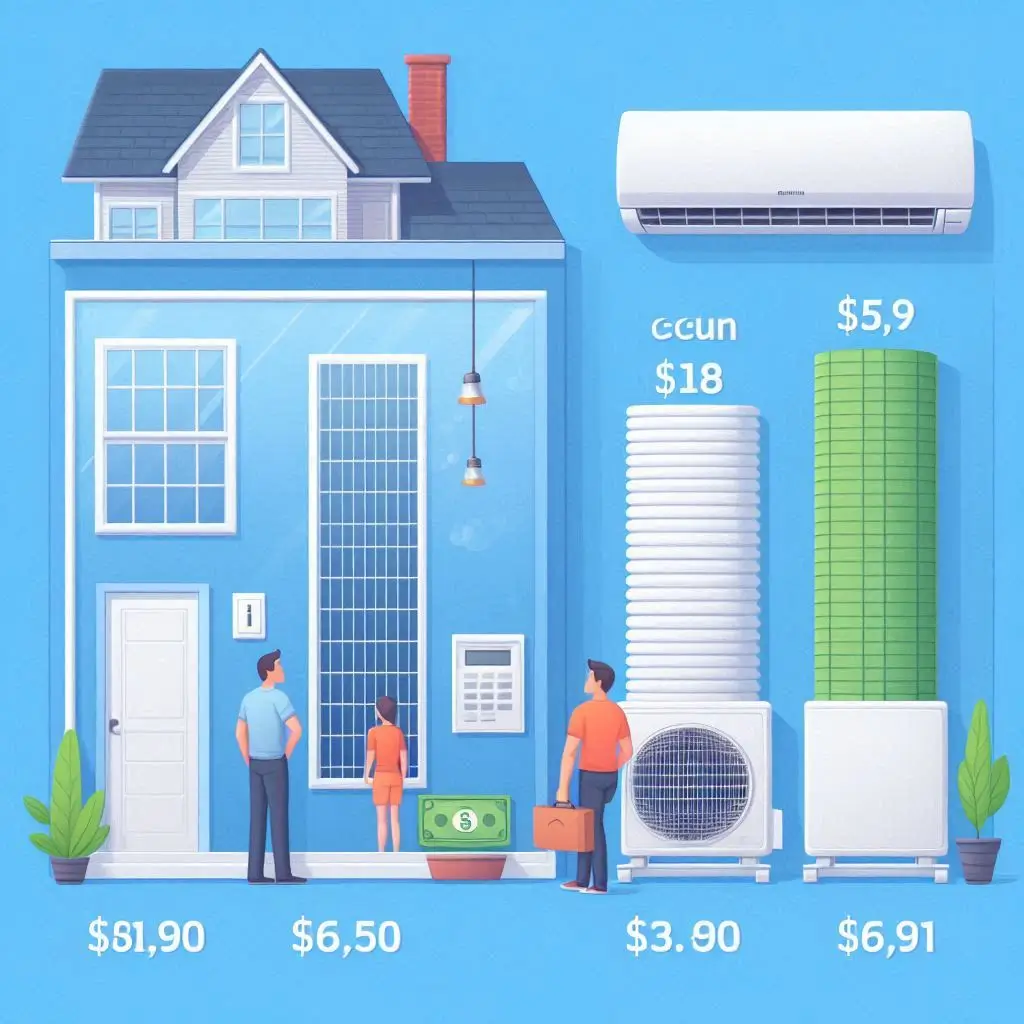
-
Size and Cooling Capacity of the Unit
Air conditioners come in various sizes, typically measured in BTUs (British Thermal Units), which indicate how much heat the system can remove from a room per hour. Larger units with higher BTU ratings are required for bigger spaces or homes with poor insulation. Choosing the right size for your space ensures efficiency and comfort but can also increase the installation cost. -
Installation Location and Accessibility
The location of the installation can affect the cost. Installing an air conditioner in a confined or difficult-to-access space may require additional labor, time, and materials, raising the price. For example, if your home needs new ductwork or requires special modifications, such as drilling holes for refrigerant lines or electrical wiring, the cost will go up. Additionally, installation on higher floors or harder-to-reach locations may demand more equipment or safety measures.
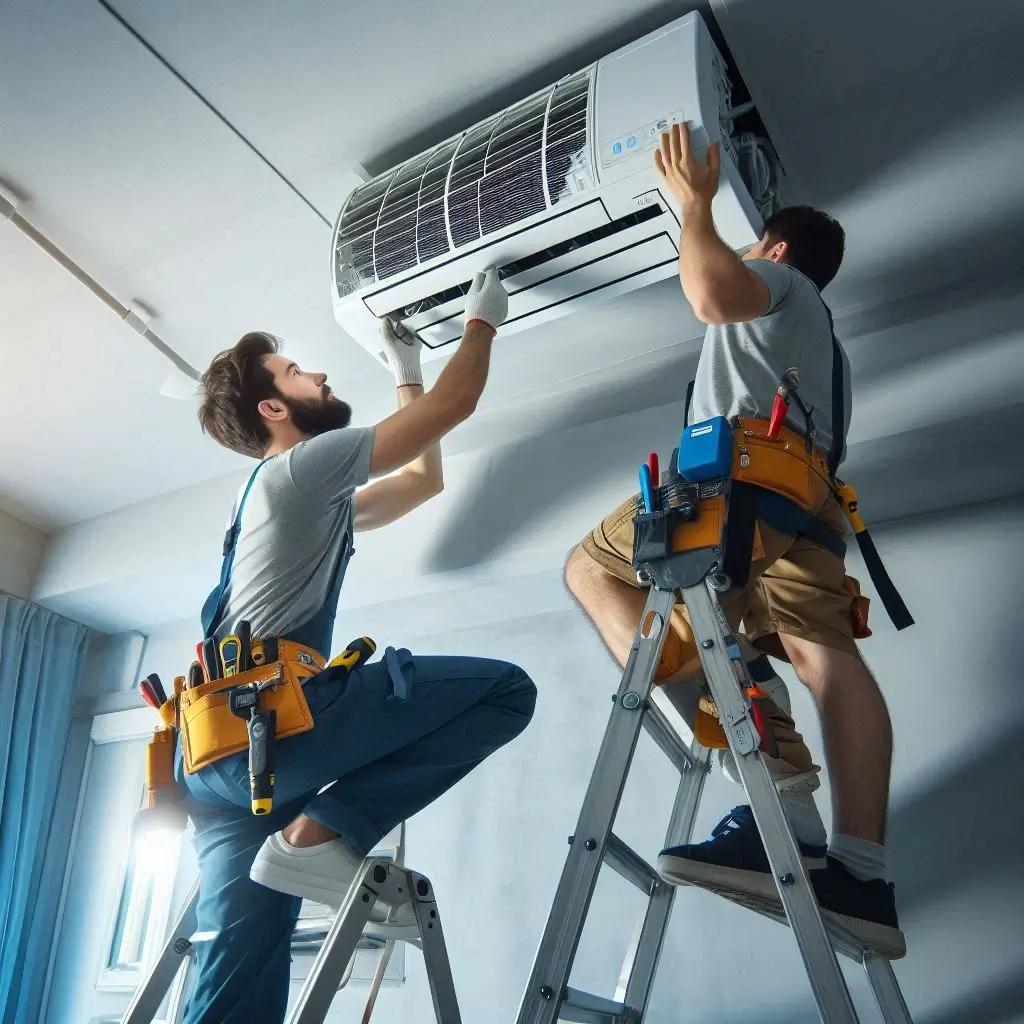
-
Labor Costs
The cost of professional labor varies by location, the complexity of the job, and the experience of the technician. Labor costs typically make up a significant portion of the installation cost, so it’s important to hire a reliable and experienced technician to avoid additional costs from errors or inefficiencies. -
Additional Equipment or Materials
In some cases, additional materials or equipment may be necessary to complete the installation. This could include new ductwork, refrigerant lines, insulation, or electrical components. These extra materials will add to the overall cost.
How to Save on Installation Costs Without Compromising Quality
While the installation of a new air conditioner is an investment, there are several ways to save money without sacrificing quality. Here are some effective strategies to reduce the installation cost:
- Schedule During Off-Peak Seasons
Many HVAC companies offer discounts or reduced labor rates during the off-season, typically in the fall or spring when demand for AC installation is lower. Scheduling your installation during these times can save you a significant amount compared to peak summer months when demand is high.
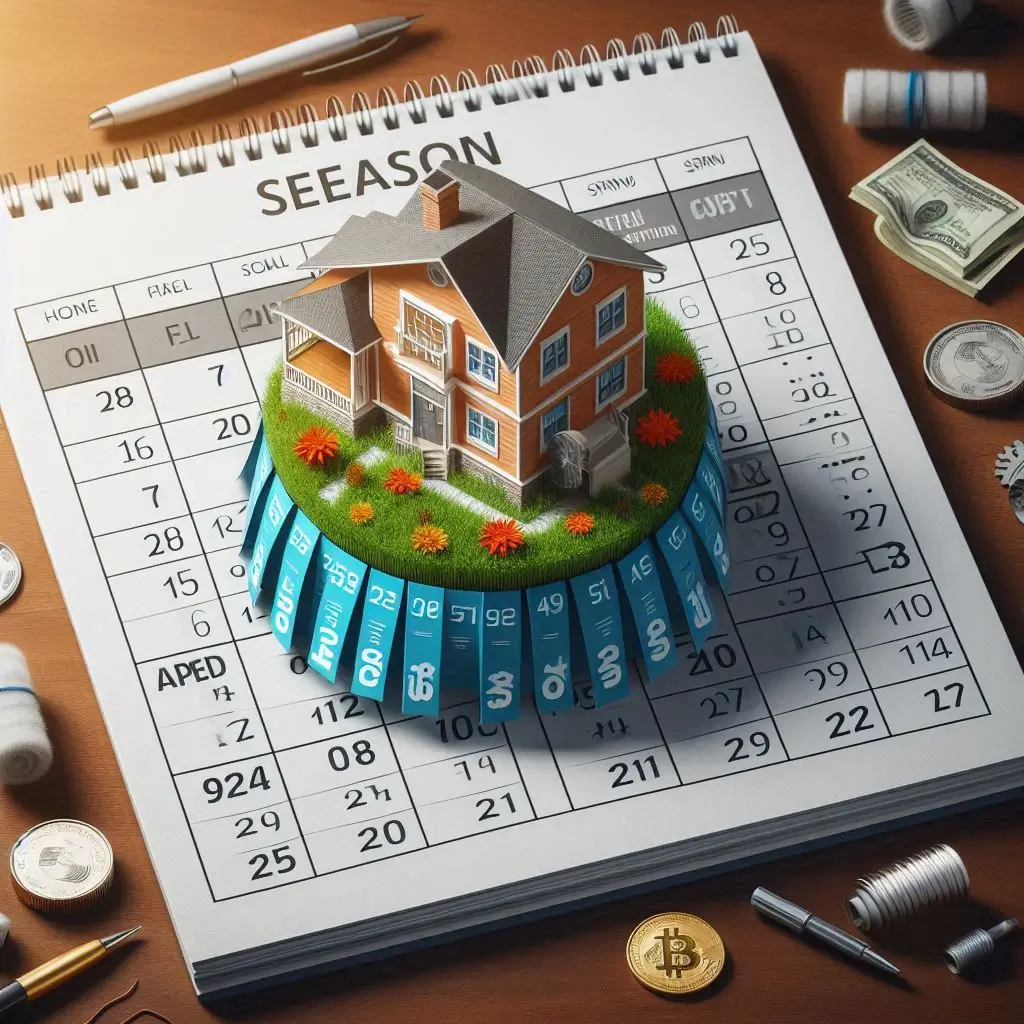
-
Get Multiple Quotes
Before committing to an installation service, it’s a good idea to get quotes from several reputable HVAC contractors. Prices can vary depending on the company’s pricing structure, the type of air conditioner you’re installing, and the services they provide. Comparing quotes will help you find a balance between cost and quality. -
Look for Promotions or Rebates
Many manufacturers or local utilities offer rebates or promotional deals for installing energy-efficient air conditioners. These promotions can significantly reduce the upfront cost. Check for rebates from your utility provider or inquire about any manufacturer incentives for energy-efficient models. -
Maintain Your Current Ductwork
If you already have an existing duct system in place, you may be able to save on installation costs by having it inspected and maintained rather than installing new ducts. Cleaning and sealing your ducts can ensure that your air conditioner works efficiently, reducing the need for expensive modifications to your existing system. -
Choose Energy-Efficient Models
Although energy-efficient models may have a higher upfront cost, they can help save on energy bills in the long run. Look for AC units with a high SEER (Seasonal Energy Efficiency Ratio) rating, which indicates better energy efficiency. Additionally, some energy-efficient models may qualify for rebates or tax credits, further reducing the overall cost.
Air Conditioner Maintenance Tips After Installation
Proper air conditioner maintenance is crucial to ensuring your system runs efficiently and lasts for many years. Regular maintenance not only helps to prevent costly repairs but also maximizes the performance of your air conditioner. In this section, we’ll cover the importance of regular maintenance, common issues that can arise with your air conditioner, and steps you can take to prevent these problems.
Importance of Regular Maintenance
Regular maintenance is essential for extending the lifespan of your air conditioner and ensuring it operates at peak efficiency. Here are the primary reasons why you should prioritize maintenance:
- Increased Lifespan of Your AC Unit
An air conditioner that is regularly maintained will last longer than one that is neglected. Routine checks and servicing, such as cleaning the coils, changing the filters, and ensuring the refrigerant levels are optimal, can extend the life of your unit by years.
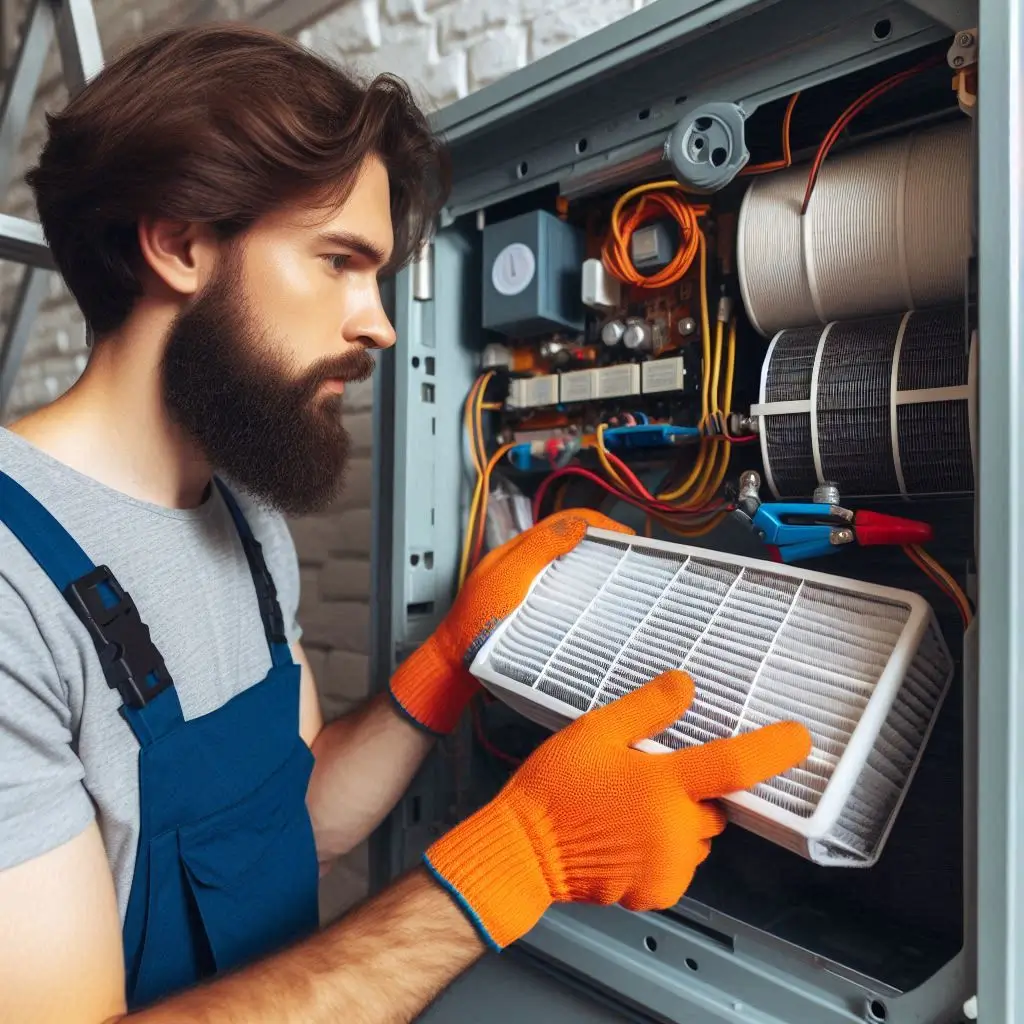
-
Energy Efficiency and Lower Utility Bills
Regular maintenance ensures your air conditioner runs as efficiently as possible, preventing it from working harder than it needs to. An inefficient AC unit consumes more energy, driving up your electricity bills. Simple tasks like cleaning or replacing filters can significantly improve energy efficiency and lower operating costs. -
Improved Air Quality
Air conditioners are responsible for filtering the air you breathe. Regular maintenance ensures that the filters and ductwork are clean, reducing allergens and improving indoor air quality. This is especially important for individuals with asthma or allergies. -
Preventing Costly Repairs
By scheduling regular maintenance, you can catch small issues before they turn into larger, more expensive problems. Early detection of potential issues allows for timely repairs, preventing breakdowns during extreme weather conditions.
Common Issues and How to Prevent Them
While air conditioners are reliable, they can encounter issues that hinder performance. Here are some common problems and how to prevent them through regular maintenance:
- Clogged Air Filters
One of the most common issues with air conditioners is clogged filters. When filters become dirty, airflow is restricted, causing the unit to overheat and work harder, which can result in higher energy consumption and reduced cooling efficiency. Replacing or cleaning filters every 1-3 months is an easy way to prevent this issue.

-
Frozen Coils
Frozen coils can occur if the air filter is clogged, the refrigerant level is low, or there is a problem with the airflow. When the evaporator coils freeze, the system can’t absorb heat efficiently, leading to a system failure. Regular maintenance of the refrigerant levels and ensuring proper airflow helps prevent this issue. -
Leaking Refrigerant
Low refrigerant levels can make your air conditioner ineffective at cooling. Refrigerant leaks can occur due to wear and tear, and they must be repaired promptly to prevent further damage to the system. A licensed technician should check refrigerant levels during annual maintenance to ensure the system is properly charged. -
Dirty Coils
Dirty evaporator and condenser coils can drastically reduce the efficiency of your air conditioner. Dust and dirt can accumulate on the coils, blocking heat transfer and reducing the system’s ability to cool effectively. Cleaning the coils during scheduled maintenance will keep them functioning optimally. -
Faulty Thermostat
A malfunctioning thermostat can cause the air conditioner to run continuously or shut off prematurely. During routine maintenance, technicians can calibrate the thermostat and ensure it accurately measures the temperature. Regular checks can prevent unnecessary strain on the system.
FAQ: Frequently Asked Questions About Air Conditioner Installation
Q: How long does it take to install an air conditioner?
The time required for air conditioner installation depends on several factors, such as the type of unit being installed, the complexity of the setup, and the specific requirements of the space. On average, residential air conditioner installations can take anywhere from 4 to 8 hours. Here are the factors that can influence the installation time:
-
Type of Air Conditioner
Installing a window unit may take less time, while the installation of a central air system or a ductless mini-split can take longer due to the complexity of running ducts and wiring. -
Site Preparation
If there is a need for additional preparations, such as removing an old unit, fixing structural issues, or creating a foundation for outdoor units, this could add extra time to the installation process. -
Weather Conditions
Extreme weather conditions can also affect installation. For example, during high heat in summer, technicians may need to take extra precautions to ensure they are not affected by heat exhaustion.
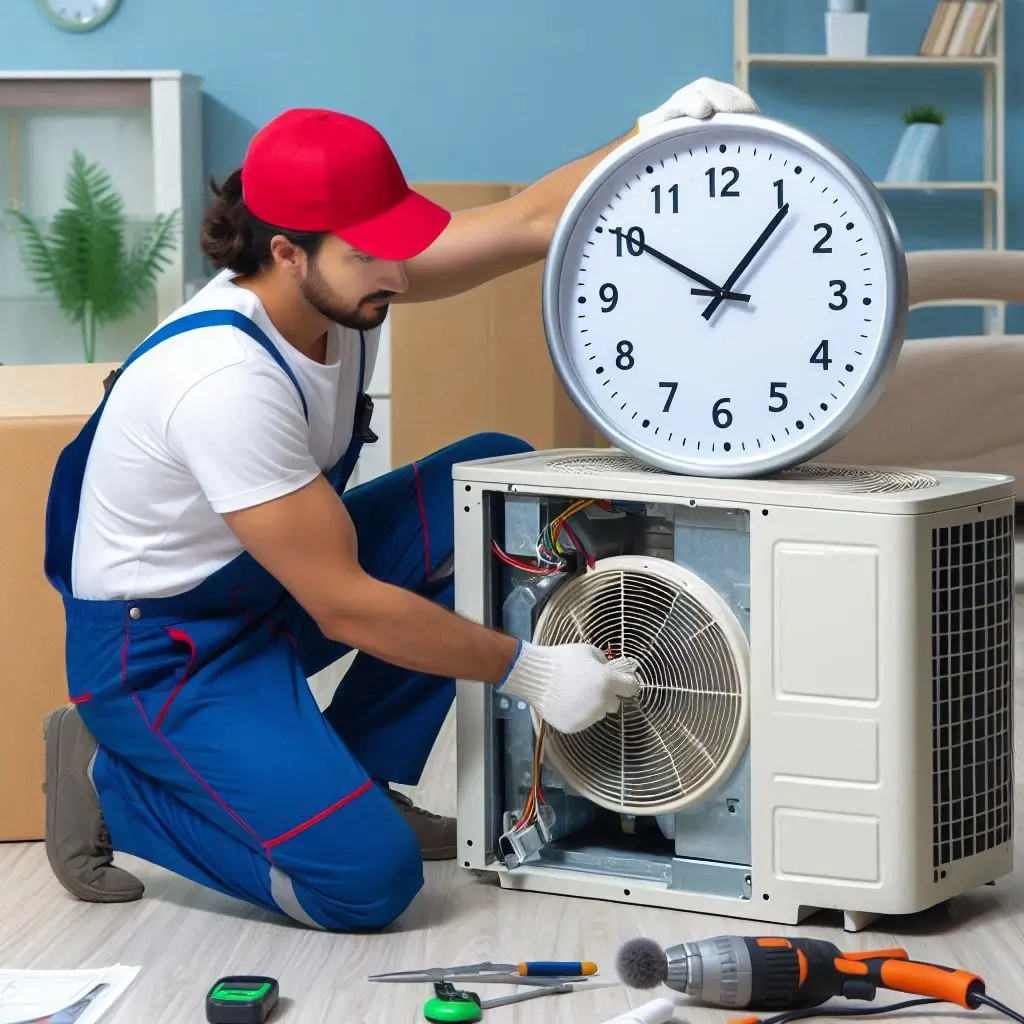
Q: Can I install an air conditioner myself?
While DIY air conditioner installation might seem like a cost-saving option, it is generally not recommended for the following reasons:
-
Complexity
Installing an air conditioner, especially a central or ductless unit, requires specialized knowledge of electrical wiring, refrigerant handling, and ductwork. Improper installation can lead to inefficiency, higher energy costs, or even damage to the unit. -
Safety Risks
Handling refrigerants and electrical connections without proper training is dangerous. A licensed technician is trained to ensure everything is installed safely and in compliance with local codes and regulations. -
Warranty Concerns
Many manufacturers require professional installation for their warranty to be valid. Attempting a DIY installation could void your warranty, leaving you responsible for repair costs in case of any malfunction.
For these reasons, it is always best to hire a professional to ensure your air conditioner is installed properly.
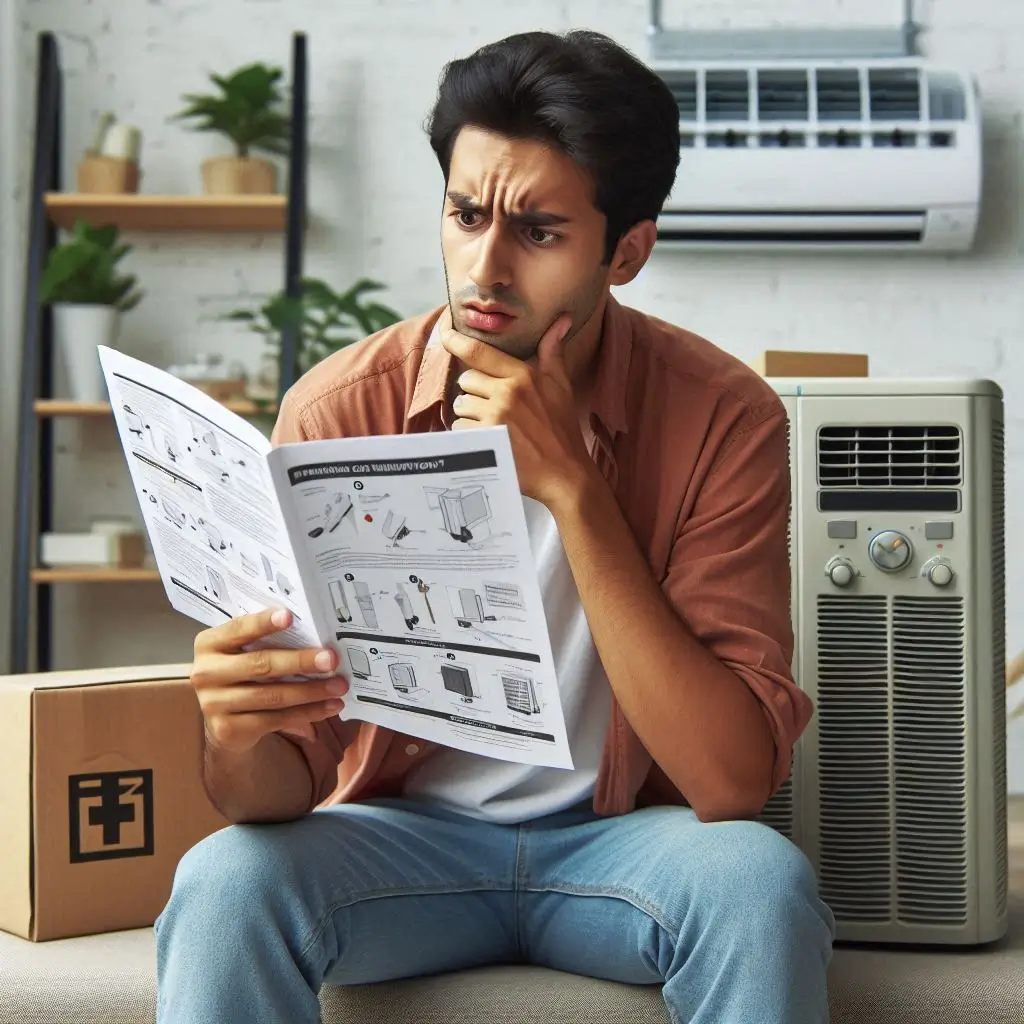
Q: What are the key signs that my air conditioner needs professional installation?
There are several signs that indicate the need for professional installation of an air conditioning unit:
-
Frequent Breakdowns
If your air conditioner is constantly breaking down, it could be a sign that it was installed improperly or is incompatible with your space. Professional installation ensures that the system is suited for your home’s size, layout, and cooling needs. -
High Energy Bills
If your energy bills are unusually high despite having a newer air conditioner, it could be a result of improper installation. A poorly installed system will have to work harder to cool your space, consuming more energy in the process. -
Inconsistent Cooling
If your air conditioner is not cooling your home evenly, it may be improperly sized or poorly installed. Professional installation helps to ensure that the system is appropriately calibrated and balanced. -
Noisy Operation
Excessive noise or vibration could indicate that the system was not properly secured or aligned during installation. A professional technician can fix these issues and ensure the unit runs smoothly.
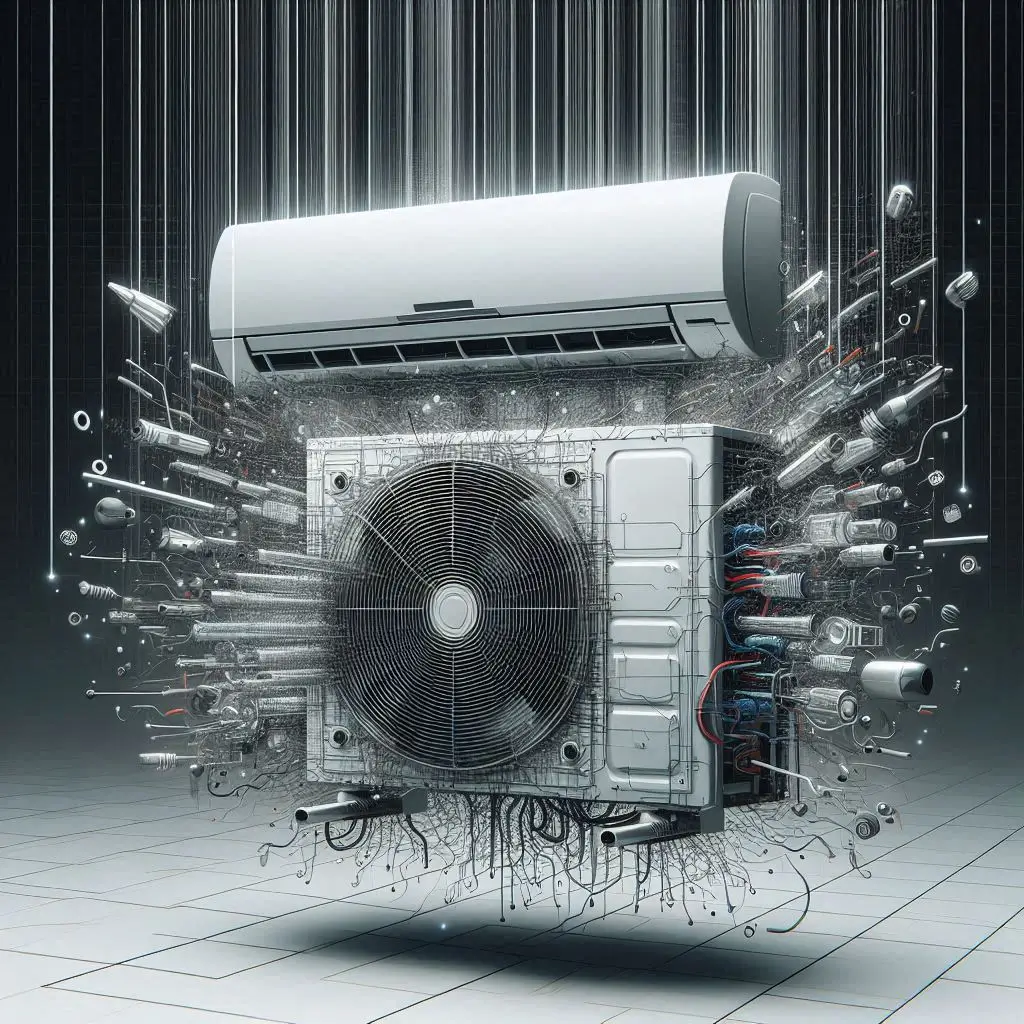
Q: How do I maintain my air conditioner after installation?
Proper maintenance is essential for keeping your air conditioner running smoothly and efficiently after installation. Here are a few key maintenance tasks that should be done regularly:
-
Regular Filter Replacement
Air filters should be replaced every 1 to 3 months depending on usage and type. Clogged filters reduce airflow and efficiency, causing your air conditioner to work harder and increasing energy consumption. -
Clean Coils and Condenser
Dust and dirt can accumulate on the evaporator and condenser coils, reducing the system’s efficiency. Cleaning these coils during routine maintenance ensures optimal performance. -
Check Refrigerant Levels
Low refrigerant levels can cause the air conditioner to freeze or fail to cool your space. A professional technician should check the refrigerant levels during annual maintenance. -
Ensure Proper Insulation
Check for leaks in the ductwork and ensure that insulation is intact. Leaky ducts can waste a lot of energy, leading to higher utility bills. -
Schedule Professional Maintenance
While homeowners can perform basic maintenance tasks, professional maintenance should be done annually to ensure that everything is functioning correctly. Technicians will check for potential issues, clean components, and ensure the system is running at peak efficiency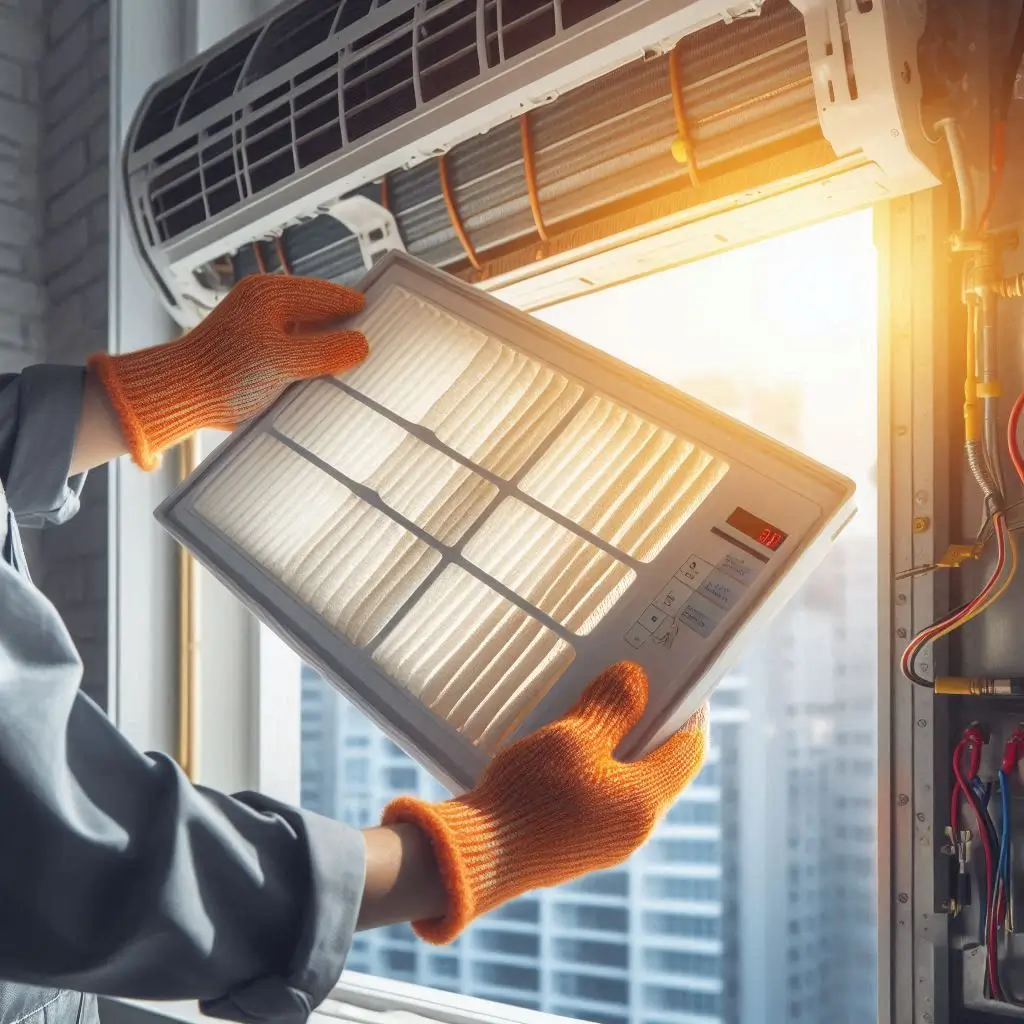
Conclusion:
In conclusion, proper air conditioner installation is crucial for ensuring the efficiency, safety, and longevity of your cooling system. Whether you’re considering a DIY installation or hiring a professional, understanding the steps involved and the factors that contribute to a successful installation can make all the difference. From choosing the right air conditioner to the actual installation process and ongoing maintenance, following best practices will help you enjoy optimal comfort and reduced energy costs. If you’re looking for a hassle-free and reliable installation experience, don’t hesitate to contact a licensed professional to get the job done right. Investing in expert installation now will save you time, money, and stress in the future.

